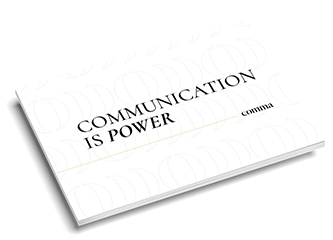Advertisers are dead. Or they’re on a spree. Because they disappeared from the media during the health crisis caused by COVID-19. Recently, I had the opportunity to interview several media directors as part of the campaign “Comunicación valiente, comunicación con valores” and they all agreed on one thing: the return of advertisers is necessary to guarantee the survival of media as we know them.
This relationship of dependence has sustained a model that is perceived to be increasingly weakened, in a constant search for the formula that will keep an industry afloat, which, paradoxically, has a larger audience and is more necessary than ever.
Subscription for content seems to be the solution in the Netflix era, and yet a large part of the population in our country is reluctant to pay for something that, until recently, was free. The economic crisis facing the media bears a close resemblance to the Addpocalypse phenomenon, which in 2017 popularized live broadcasting to the detriment of audio-visual production.
During the confinement due to the health crisis, live broadcasting via streaming has consolidated as a content consumption habit for a large part of the population, whether at work or in leisure environments. During this time, we have learned to communicate better through screens, we have found new ways to interact with the audience and the consumption of concerts, seminars or talks has been normalized, becoming a business model with great potential.
Addpocalypse and the consolidation of live streaming
In 2017, a series of controversies associated with content creators on YouTube caused the exodus of large advertisers from the platform. As a mitigating measure, Google implemented an algorithm that categorizes, in a restrictive way, the channels in which advertisers can place their ads without worrying whether the content could affect their brand image.
This caused many creators, especially those targeting an adult audience, to see their income eroded to the point of making their activity economically unviable. As a result, numerous ways of monetizing content emerged. For example, direct brand sponsorship of videos aimed at their target audiences increased. Creators who were not able to attract sponsors (or did not want to count on them directly) began to make use of freemium alternatives for micro-patronage, hand in hand with intermediaries such as Patreon or through live streaming on Twitch (Amazon) or Mixer (Microsoft), which will become part of Facebook Gaming at the end of July.
These platforms began to swell their ranks with hundreds of creators who found a space where they could monetize their content without the restrictions imposed by Google’s algorithm. Today, many creators who have gained an audience on YouTube are making live broadcast compatible with video production to maximize their revenues.
Twitch, Amazon’s live streaming platform, was the first to implement a freemium model. Users can access any live streaming for free; however, the platform offers the possibility to support content creators through subscriptions and/or disinterested donations. Subscriptions offer certain advantages, such as skipping announcements during the broadcast or access to the exclusive chat for subscribers, although each creator is free to add other benefits such as participation in raffles or access to direct communication channels. In both cases, streamers receive the majority of the revenue derived from the contribution, at a much higher percentage than when monetizing a video on YouTube.
Under this premise, many creators from different fields began to broadcast their content live, causing Twitch to open up to a wider audience. Although the platform is known for its gamer content, nowadays it is possible to find channels with very diverse themes. Similarly, it is common for the platforms themselves to reach agreements with creators with a greater volume of viewers to guarantee their permanence and the exclusivity of their broadcasts. This, in turn, has encouraged the creation of very loyal and lucrative communities, which support their favourite creators on a monthly basis with their subscription fee.
A new type of audience for the media
Why are the users of these platforms, usually young people, willing to pay for entertainment that they can access for free and yet resist paying for information offered by media? Why is not possible to create a “Netflix” of news – such as Apple’s attempt from where media such as the New York Times are already exiting?
The simplest answer is that the audience does not pay for the content as such, but for the feeling of belonging to a community. The key to the success of these platforms lies in making monetization a way to interact. Users empathize with the creators, better understand their work, the difficulty of carrying it out and want to have a space where they can relate to them within that context.
A few days ago, Francisco Rouco de Xataca detailed in an article all the subscription models used by the Spanish press. In spite of the different proposals and prices, he highlights how most of them limit themselves to putting up a wall of payment for content that, until recently, would have been free under the advertising model. If the future of journalism is about subscription, we must think about what the new audience will demand and for what they are willing to pay. We are moving towards a more participatory model, where the subscriber wants a personalized experience and direct communication channels with the source of the information.
The value of journalism has historically been in the ability to convey information, to give relevance to facts, to provoke change and, at present, to do so immediately. It is our job to find out what value to bring to the audience in this new normality and to legitimize it with its economic support.






